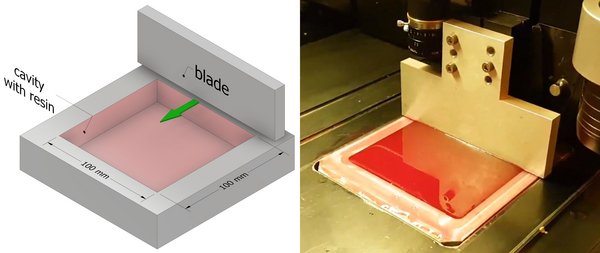Researcher in the Spotlight: Andrei Kozhevnikov
My research focuses on the resin layer deposition process of the vat photopolymerization additive manufacturing technique
I’m Andrei Kozhevnikov and my research focuses on the resin layer deposition process of the vat photopolymerization additive manufacturing technique. I do this within the Fluids and Flows research group of the Department of Applied Physics.
Tried and tested with TNO
Open-loop control systems (or no control at all) are currently used in the recoating step of all modern stereolithography machines, which results in non-uniform layer deposition. A non-flat resin surface causes unevenness in the solidification process, eventually leading to anisotropic properties and the propagation of cracks in the solid part. I therefore want to develop a smarter, closed-loop control system which will be able to measure surface imperfections and counteract them by changing the recoating parameters in real time.
In my study, I use numerical simulations to determine the influence of recoating parameters on free surface deformation. In order to verify the numerical results, the experiments are carried out on a Lepus Next Gen stereolithographic prototype machine (in collaboration with TNO).
Major modifications no more
Based on a simple, rectangular-shaped underlying geometry configuration, I explored the influence of the recoating blade speed, vertical position of the blade and the blade width on the resin surface topography. The simple analytical solution that I derived has been accurately confirmed through CFD simulations and experiments.

The first attempts to use a changing parameters strategy to control the layer thickness showed promising results: incorporating the closed-loop control system into the deposition stage might significantly improve the performance of modern stereolithography equipment without major or expensive modifications. Moreover, it can scale up the product size and increase the production speed.
Particle presence and process control
My research is part of a bigger project that includes experts focused on the irradiation step (Steyn Westbeek) and control systems (Thomas Hafkamp). Steyn is working on multiscale modeling of the photopolymerization process, including the influence of particle presence on light propagation in the resin. Based on Steyn’s research, imperfections in the resin deposition step can be partially compensated by changing the curing step. The same applies in reverse. Knowledge of fluid dynamics during the recoating process can also be exploited by Thomas in his development of a process control strategy at the full-machine scale.